This guide will help you understand what a force field analysis is and how to conduct it in 6 simple steps.
You’ll find
If you are looking for a tool that will help you make business-related decisions faster and better, you will find the force field analysis useful.
Let’s get started.
What is Force Field Analysis
The force field analysis is a widely-used change management model; it works as a diagnostic tool and a powerful decision-making tool during change planning.
You can use it to identify – by visually mapping – the driving forces and restraining forces for and against the initiative and thus work on leveraging the factors in favor while reducing the unfavorable ones to ensure the successful implementation of the change plan.
The force field analysis tool was developed as a change management model in 1951 by the German-American psychologist, Kurt Lewin who is also known for being a founder of modern psychology. Today, the tool is even widely used to inform business decision-making.
The basis of the tool
The basic idea behind the force field analysis is that a certain given situation remains the way it is because of counterbalancing forces, or because of the state of equilibrium between forces that drive change and oppose change.
In order to promote change, either the driving forces should be strengthened or the resisting forces should be weakened.
And it integrates with Lewin’s 3-stage theory of change.
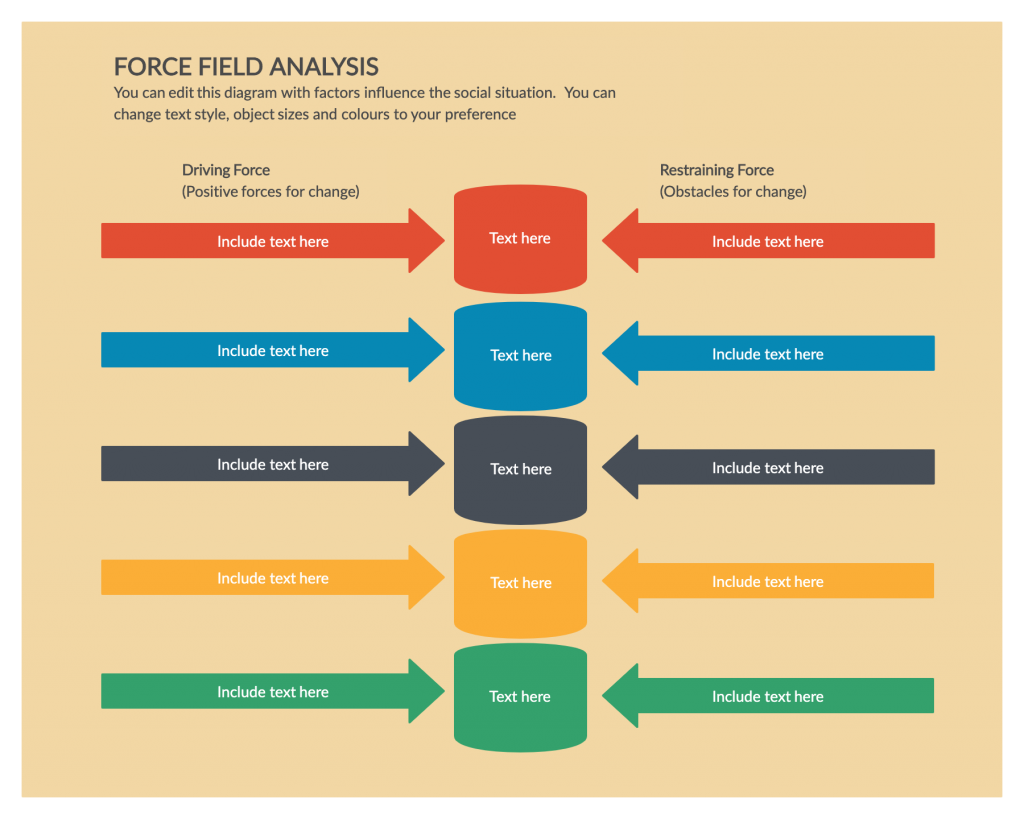
When to use the tool
The force field analysis is ideally used for diagnosing a problem. You can use it to
- Analyze the balance of power
- Identify the key roles involved in decision-making
- Identify who supports and opposes change within the organization
- Explore ways to influence those who are against change
- Decide whether to go ahead with a proposed change or not
How to Conduct a Force Field Analysis
The analysis is best carried out in small groups of 5 to 9 people who are directly involved in the change implementation process.
It’s important that everyone else who is also likely to be affected by the change is kept in the loop. To gain their commitment and support for the deployment of the project, they should be kept informed about and involved in planning, development and decision-making from the very beginning.
For a more productive discussion, have a force field analysis worksheet ready at the beginning of the meeting.
The worksheet can be paper-based, or you can use the following Creately template to start right away. Simply add the email addresses of the other group members to the document to give them edit/ review access. This way everyone can collaborate on populating the worksheet.
Template 1
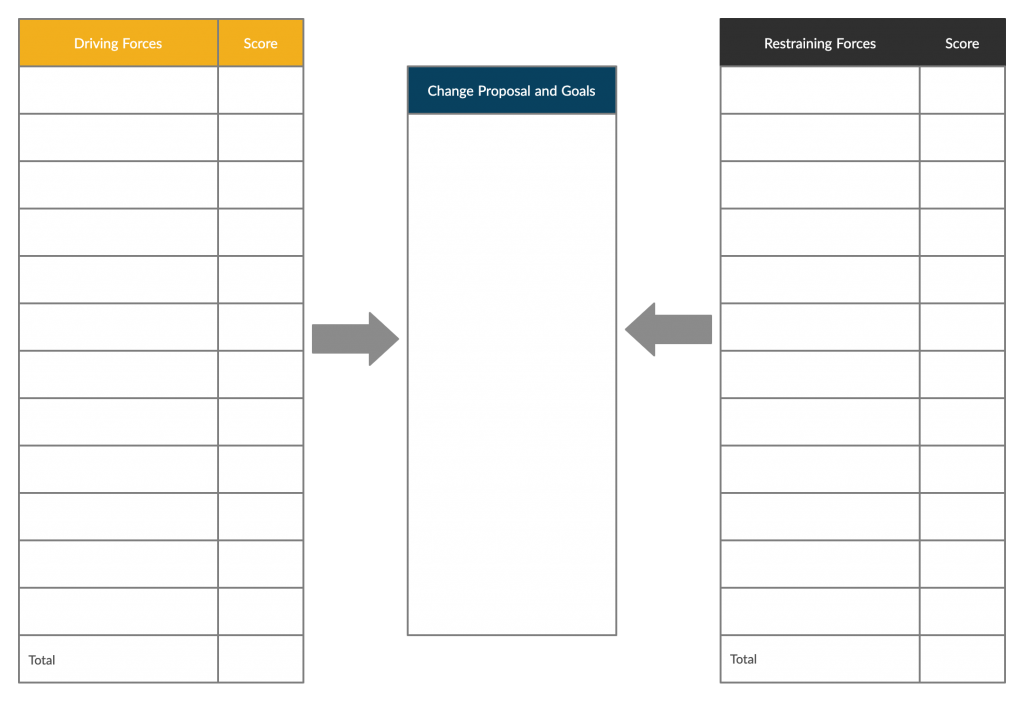
Template 2
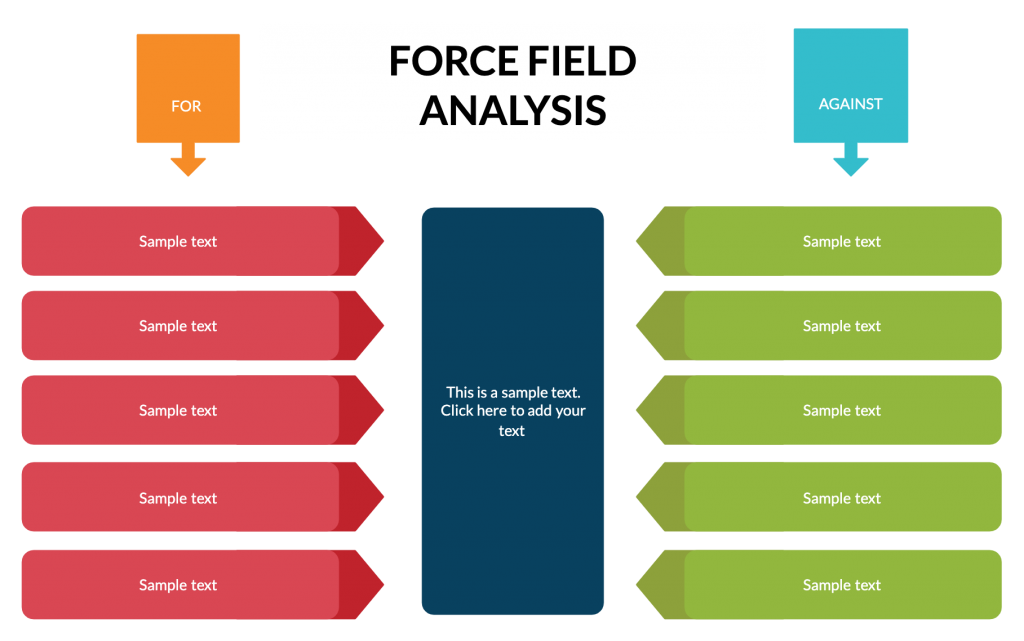
Step 1: Assess the current situation
You need to start the session by discussing the current situation of the organization in terms of the issue at hand with the key stakeholders.
This may include determining where you are at, the challenges you are facing due to the issue you are trying to solve, the reaction of the employees, etc.
It’s also important to clarify where you want to go or the desired state you want to achieve with the initiative. At the same time, consider what will take place if you fail to take action to change the current situation.
Here you can do a quick SWOT analysis using SWOT analysis tool to understand what strengths you can use to overcome the existing threats and see how you can work on overcoming weaknesses and take advantage of the presented opportunities.
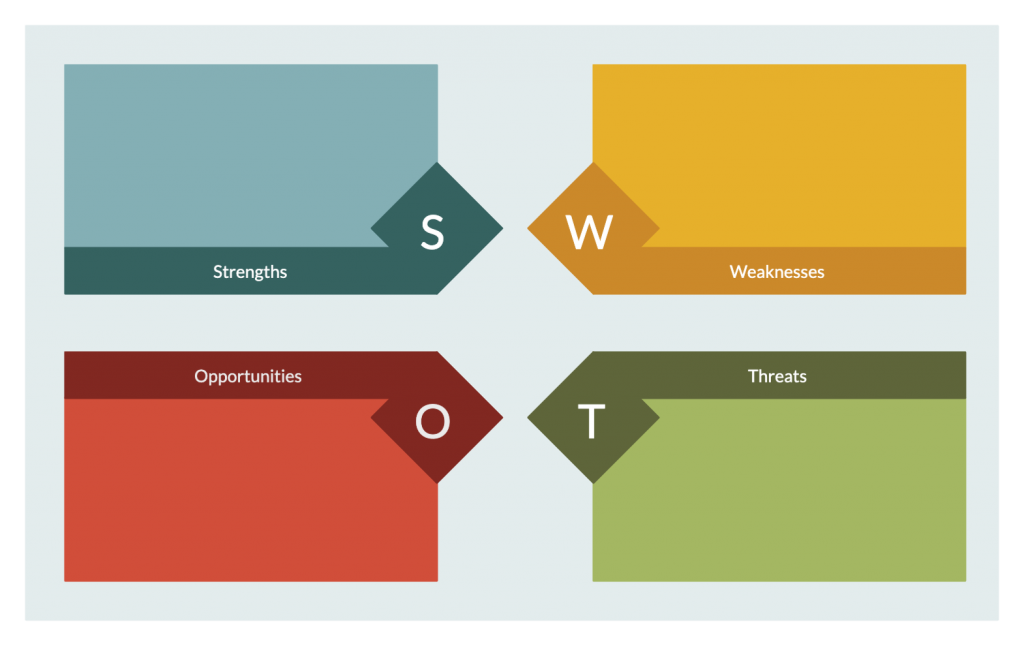
Step 2: Define the objective
The next step is to identify the expected outcome of the change initiative. Once you have clearly defined the goal(s), write them inside the box in the middle of the template provided above.
Step 3: Identify the driving forces
Driving forces are the factors that are in favor of the proposed change or the ones that support the achievement of the defined goal.
These are considered positive and usually includes factors like advancing technology, changing industry trends, increasing competition, opinions of customers or shareholders, incentives, etc.
In this step, your task is to brainstorm as many driving forces as possible with the team and list them in the relevant field of the worksheet.
Of course, you can turn to people outside the team (interview them), people who are specialized in the subject area to find the information you need during this step.
Step 4: Identify the restraining forces
These are the factors that will block your path to achieving your goal. They tend to restrict the impact of the driving forces. For example, these may include the fear of the individuals, organizational structures and negative attitudes of employees, etc.
The list of forces that are against change should be listed on the right-hand field of the worksheet.
One thing you need to keep in mind is not to be subjective when deciding which forces to add to the force field analysis and which ones to leave out.
Step 5: Evaluate the forces
You can evaluate the influence of each force by assigning them scores.
Using a numerical scale (10 being extremely strong and 1 being extremely weak), assign each force a score based on the impact they have on the change initiative.
You can also assess the forces by focusing on the impact each of them may have. This way you can ditch assigning each force a score.
Based on the effect they have, you can decide whether the proposed change is viable. Accordingly, you can discuss how you can influence the forces in favor of change: you can weaken the restricting forces by strengthening the driving forces.
Step 6: Create an action plan
Based on how you want to go about strengthening driving forces and weakening restraining forces, you can create a quick action plan.
This can help you clarify what needs to be done, who is responsible, the resources needed, and the due dates you need to be concerned about, etc.
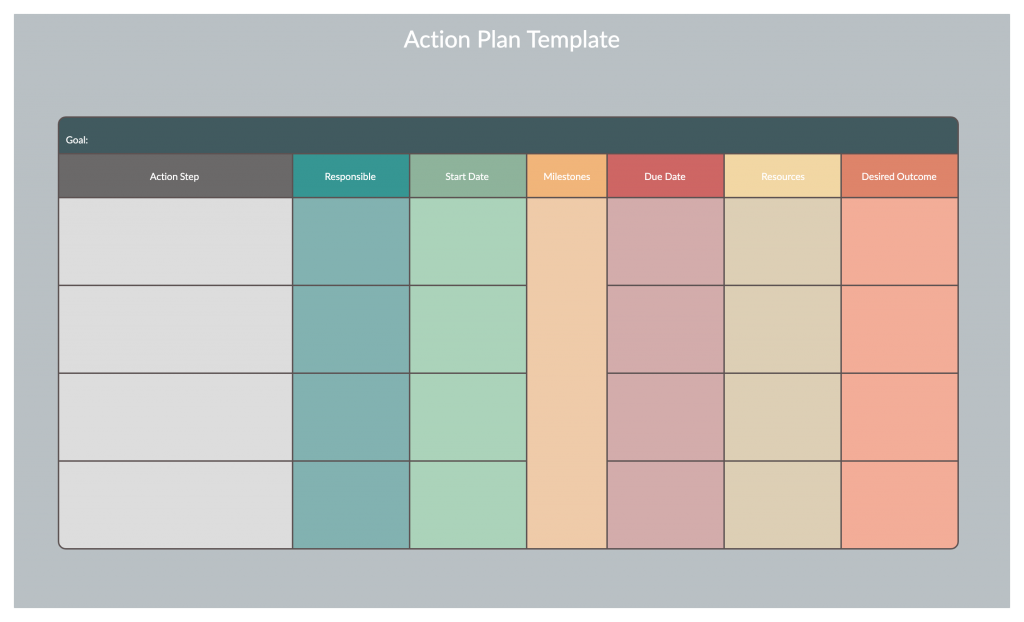
What’s Your Opinion?
The force field analysis is a great tool to evaluate if the proposed change is practical or not and identifying the blockers against change. Its outcome will help you identify possible solutions to remove these obstacles and effectively work on achieving your change management goals.
How do you go about decision-making and problem-solving? Do you currently use any other tool other than the force field analysis? Share your thoughts in the comments section below.


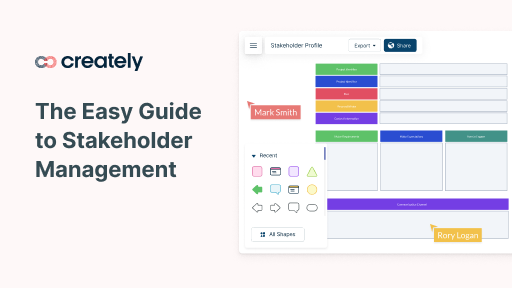
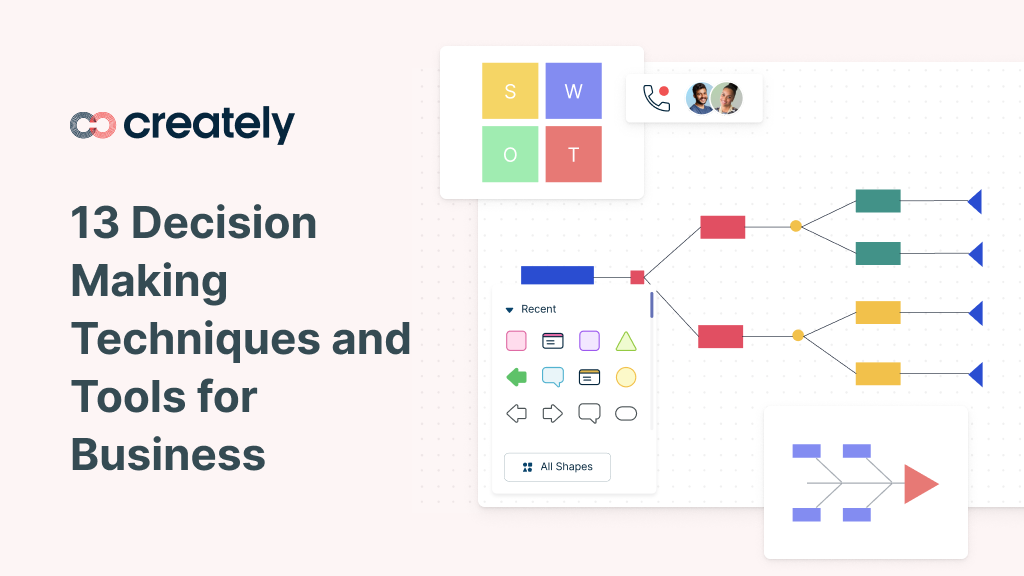
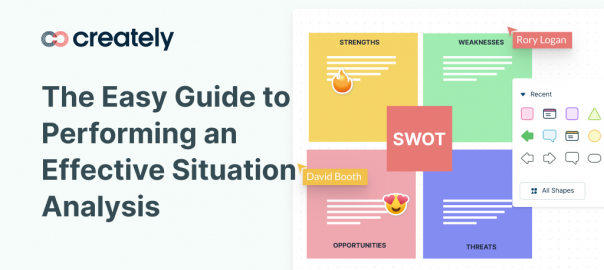
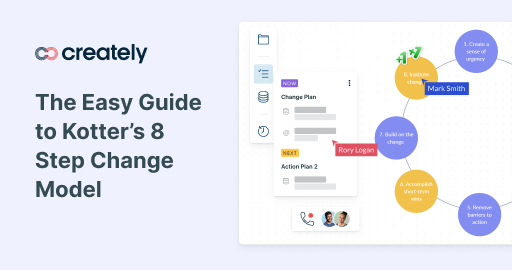
Hi Amanda!
Your article was super helpful for me. I love the way you laid out the topic and the templates are a lifesaver. I’ve struggled to understand one point of the force field analysis, and I was wondering if you could help explain it to me.
Since I am currently doing a force field analysis – I want to know the best way to support the restraining/driving forces when it comes to evaluation. Is it best with a numerical scale? Or does a qualitative take on the effects, like you said, show a more holistic approach?
I would really appreciate your response!
Sincerely,
Gabrielle
Hi Gabirelle,
Thank you and glad that you found the article helpful. And yes you can evaluate the factors by assigning each factor a score, or you can consider the impact they may have on the initiative. It really depends on which method you would find effective and easy; however, both help out just the same.
Cheers,
Amanda